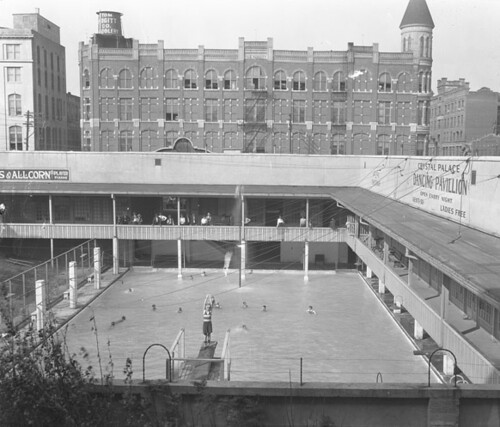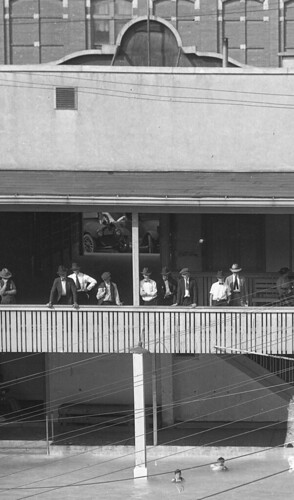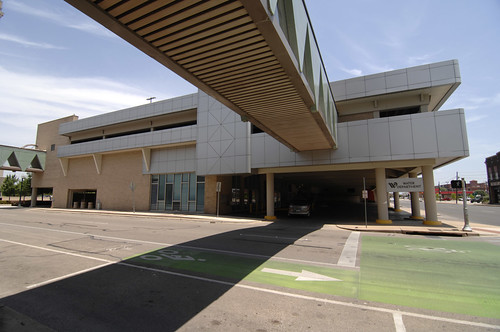
An old photo allows us to take a dip into the past…and in no image is that comparison more apt than these views of Waco’s Crystal Palace pool! Such an image almost allows you to see, hear, and feel the environment that people experienced many decades ago. By taking one photo (above, by Fred Gildersleeve, circa 1910s) and breaking it down into pieces, we can “read” so much about the former landscape of downtown Waco, Texas, and the city’s history…including one of Waco’s most cherished but now mostly vanished natural resources: artesian well water.


The Crystal Palace pool had its source of water from one of the city’s many natural artesian wells. A pipe can be seen where this natural resource freely flowed (above, left). Maybe a little too freely, as the people of Waco would learn.
The first artesian well in Waco was drilled by J.D. Bell in 1886. Bell later established the Bell Water Company and in 1904 it was sold to the city of Waco. Many more wells were drilled and consequently, Waco became known as “Geyser City.” This name was well deserved as it was recorded in 1890 that one of this city’s wells was 1,800 feet deep and had an output of 1.5 million gallons of water per day!
This natural resource supplied business needs such as the water supply for the Amicable (Alico) Building. Additionally, it supplied the nearby Artesian Bottling Co. that later became the Dr Pepper Bottling Co. The Natatorium Hotel boasted Waco’s first indoor pool being supplied by this same artesian water. These warm natural waters were even purported to have medicinal effects when consumed or used for bathing.
But in the 1920s the artesian wells below downtown Waco began to run dry and could no longer sustain a constant supply for water-based establishments such as the Crystal Palace pool. Factors for their demise included more demand from changes in population, the arrival of Camp MacArthur in 1918, and the constant strain from various businesses.


Gildersleeve took his picture with a large format view camera that used 8×10 film to capture the image. The digital version seen here was scanned from Gildersleeve’s original 8×10 inch cellulose nitrate negative now held in The Texas Collection. (We’ve digitized many of our Gildersleeve prints if you’re interested in seeing more views of Waco in the first half of the 1900s. We now are working on processing the many negatives we also house.)

The remarkable detail of the photo is due to the size of the negative that Gildersleeve’s large format camera used; a high-resolution digital scan makes it even more amazing! Indeed, even today’s digital cameras would be hard-pressed to match the kind of detail seen in this nearly 100 year-old image. The artesian waters dissipated, but we still have wonderful photos like this one to preserve Waco’s history as the Geyser City.
By Geoff Hunt, Audio and Visual Curator






























